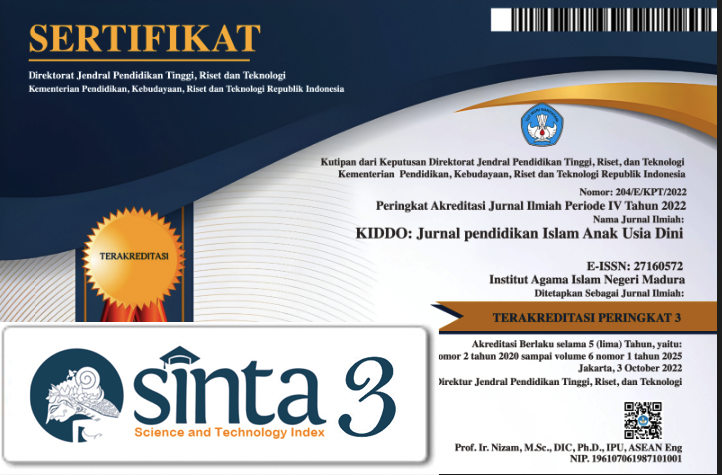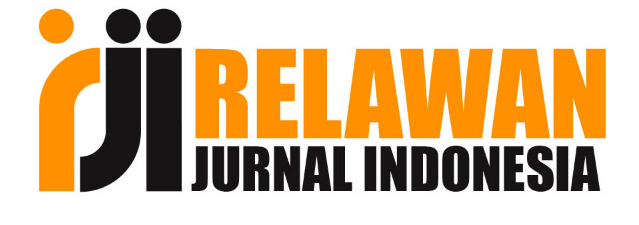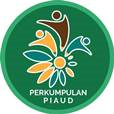Stimulation of Children's Art Development: An Analysis of the Influence of Makeup Play Tools
 Abstract views: 158
,
Abstract views: 158
,
 PDF downloads: 116
PDF downloads: 116
Abstract
This study aims to determine whether there is a significant influence of makeup play tools on the development of children's fine arts at Griya Bina Widya Kindergarten, Griya Bina Widya Unri Housing Complex, Tuah Madani District, Pekanbaru City. This type of quantitative research uses the experimental method one group pretest posttest design. The subjects of the study were teachers and early childhood at Griya Bina Widya Kindergarten, the object of this study was the influence of makeup play tools on the development of fine arts of children aged 5-6 years. The population in this study were children of Griya Bina Widya Kindergarten. The sampling technique used purposive sampling, where the number of samples taken was 9 children. Data collection techniques were observation and documentation. Data analysis used SPSS Ver. 23 with Paired Samples t-test. The results of the study found the following findings: 1) Makeup play tools can be used as a learning medium; 2) Children are able to be more creative; 3) Children are able to explore; 4) Children are able to feel beauty; 5) Children are interested in playing; 6) Children are able to paint in various ways and objects; 7) Children are able to express artistic activities through imagination; 8) Children are able to draw in various forms. The results of the study showed that there was an increase in children's artistic development in Griya Bina Widya Kindergarten by 52.57% with a moderate category with a normalized formula. The results of the t statistical test have a sign value. 0.000 <0.05 with tcount - 42.090 <ttable - 1.79588. So the null hypothesis is rejected and the alternative hypothesis is accepted so that there is an influence of makeup play tools on children's artistic development in Griya Bina Widya Kindergarten.
Downloads
References
Almira Syakina, Mari Okatini, & Lilis Jubaedah. (2021). Covering imperfect parts of the face and highlighting the advantages of the face to display results as needed is an art form called facial make-up. Journal of Student and Health Research, vol.8,no.1
Amiroh Amiroh, & Pamungkas, J. (2023). “Creative Process of Letter and Number Forms in Painting Learning.” Journal of Obsession: Journal of Early Childhood Education, vol.7, issue 5
Astuti, P. , N., & Zakirman. (2023). Motivation for Decorating and Its Relation to Young Women’s Self-Confidence in Teratak Baru Pesisir Selatan. Malewa: Journal of Multidisciplinary Educational Research, vol. 1. No.01
Djarwo, C. F. (2020). "Analysis of Internal and External Factors on the Chemistry Learning Motivation of High School Students in Jayapura City. In IKIP Mataram Scientific Journal, vol.7, issue 1
Elena Maitria, & Merita Yanita. (2021). “Sew Eyelashes And Smokey Eyeshadow On Eyes Down Against Makeup.” Journal of Makeup and Beauty, vol.1, no.1
Fadhilla Alfitri, A. R., & Muhammad Faisha. (2023). “Perceptions of Islamic Aqidah and Philosophy Study Program Students at UIN North Sumatra regarding Beauty Vloggers in Ethical Review.” Journal of Islamic Studies, vol.2, no.2
Fauziah, N. O., & Khairunnisa, A. (2023). “Women Empowerment Through Facial Makeup Beauty Training Women Empowerment Through Facial Makeup Beauty Training”, Archipelago Journal, vol.3. no.2
Firdha Maharani, M., & Wulandari, R. (2023). Analysis of Coloring Activities to Develop Artistic Aspects in Children in Play Groups Article History. In Significant: Journal of Research And Multidisciplinary , vol.1, no.02
Haniifah, Y. N., & Wibawa, A. (2022). “Goddess Nyx’s Adaptation of Fantasy Makeup for a Halloween Party.” Cosmetology Journal, vol.12, no.2
Hartanti, W., & Afandi, N. K. (2023). “Analysis of the Implementation of Drawing Methods for Forming Early Childhood Creativity in the Perspective of Constructivism Theory 193.” Journal of Early Childhood Education, vol.8, no.2
Henny, S. R. , K. A. , S. N., & Suhardin, N. (2023). “Stimulation of the Development of Early Childhood Art Aspects.” Golden Generation Journal of Early Childhood Islamic Education, vol.6, no.1
Lestari, A. , & Erianjoni, E. (2020). “Dynamics of Male Make Up Artist (MUA) Activities in Padang City.” Perspective Journal, vol.3, no.1
Lubis Anas Nurasiyah. (2023). “Art and Education.” Sabilarrasyad: Journal of Education and Educational Sciences, vol.6, no.1
Maihani, S., Khairani, C., Ahmad Zaki Yamani, S., & Nur, I. T. (2023). Community Empowerment Through Creativity Primary School Level Coloring Competition. Community Development Journal, vol.4,no.2
Meilin Saputri, W., Machmud, H., Anhusadar, L., Mustang, Z., & Hasana Safei, N. (2023). Khabanti Arts: Improving Early Childhood Art Development. Murhum: Journal of Early Childhood Education, vol.4,no.2
Nabila Selviera Yasmin, & Farida Mayar. (2023). ”Improving Art Skills in Children Aged 5-6 Years through Coloring Activities. Journal of Obsession: Journal of Early Childhood Education", vol.7, issue 6
Ni, R. W. , S. D. (2020). “Optimizing Early Childhood Creativity Through Art Activities.” Journal of Educational Sciences, vol.1, no.1
Nurlina, & Bahera. (2024). “Learning Through Play: Art as a Learning Tool for Early Childhood.” Ceria Journal (Smart Energetic Responsive Innovative Adaptive), vol.7, issue 2
Nurwita, S. (2020). Improving Children’s Art Development Using Smart Hafiz Media in PAUD Aiza, Kepahiang Regency. In Early Child Research and Practice-ECRP, vol.1, no.1
Pramesthi, & Maspiyah. (2015). “Makeup Results With Narrow Eye Correction on Round, Square and Oval Face Shapes for Party Occasions.” Cosmetology Journal, vol.4, no.01
Ratih Wulan. (2017). “These Little Girls’’ Makeup Skills Compete with Makeup Artists”.” Https://Www.Dream.Co.Id/Lifestyle/Kemampuan-Merias-Wajah-Gadis-Kecil-Ini-Saingi-Makeup-Artist-171016g.Html, Accessed on February 25, 2024.
Rohmah Ermawati. (2023). “The MUA business will never die, it will create a beautiful turnover.” Https://Bisnis.Solopos.Com/Bisnis-Mua-Gak-Ada-Matinya-Bikin-Cantik-Omzet-Ciamik-1732470, Diakses Pada Tanggal 25 Februari 2024 Accessed on February 25, 2024.
Santi Yudhawati Darmo. (2024). “Out Door Learning Activities Through the Flag Relay Game to Increase Children’s Cooperation in the Wijaya Kusuma Pilangkenceng Madiun Play Group.” Eduscotech Journal, vol.5, no.2
Sera Yuliantini. (2019). “Games and Playing in Early Childhood Education”. Primary Journal, vol.10, issue 10
Sri Sumyati, B. W., & Ade Wawan. (2023). “Implementation of Exploratory Play in Developing Creativity in Children Aged 5-6 Years at Al-Hidayah Islamic Kindergarten, Bandar Lampung, Academic Year 2022/2023.” Tarbiyah Journal; Journal of Teacher Training and Education, vol.1, no.02
Tri Aru Wiratno. (2023). “Problems in Art Philosophy Between Beauty and Aesthetics.” Journal of Deconstruction, vol.9, no.2
Wera Salisa, & Mutimmatul Faidah. (2019). “Makeup with Bold Eyeshadow Application Combined with Glitter Eyeshadow for Correction of Pseudoptosis Eye Disorders”. Cosmetology Journal, vol.8, no.1
Widayati, S., Khotimah, N., Simatupang, N. D., Setyowati, S., Kecvara Pritasari, O., & Windayani, N. R. (2023). Face Painting Training in Optimizing Early Childhood Art Performances”,. Communnity Development Journal, vol.4, no.1
Zaini, A. (2015). “Playing as a Learning Method for Early Childhood.” Thufula Journal, vol.3, no.1
Copyright (c) 2025 Heldanita Heldanita, Gina Shafira

This work is licensed under a Creative Commons Attribution 4.0 International License.
-
The journal operates an Open Access policy under a Creative Commons 4.0 International license. The terms of the license are:
Share— copy and redistribute the material in any medium or format
Adapt— remix, transform, and build upon the material for any purpose, even commercially.
1. Authors retain copyright and grant the journal right of first publication with the work simultaneously licensed under a Creative Commons License.that allows others to share the work with an acknowledgement of the work’s authorship and initial publication in this journal
2. Authors are permitted and encouraged to post their work online (e.g., in institutional repositories or on their website) prior to and during the submission process, as it can lead to productive exchanges, as well as earlier and greater citation of published work (See The Effect of Open Access).
Jurnal Kiddo is licensed under a Creative Commons
n Access).














